
Vatican Radio: The Voice of the Vatican
Discover the heart of Vatican City's communication legacy at Vatican Radio, where history, technology, and spirituality converge.
Nestled in the heart of Vatican City, Vatican Radio is a unique and fascinating destination for tourists. Established in 1931 by Pope Pius XI, it has served as the broadcasting arm of the Holy See, providing news, religious programming, and cultural content to listeners worldwide. A visit to Vatican Radio offers a glimpse into the history of communication within the Catholic Church and an appreciation for its role in connecting the global Catholic community. The tour of Vatican Radio takes you through its state-of-the-art studios, where you can witness live broadcasts and see how programs are produced. You will learn about the station's origins, its evolution over the decades, and the technological advancements that have allowed it to reach a global audience. The knowledgeable guides provide insights into the daily operations and the importance of Vatican Radio in spreading the Pope's messages. Additionally, Vatican Radio's rich archive is a treasure trove of historical recordings and documents. Visitors can explore these archives to uncover significant moments in church history, including Papal addresses and important events. The blend of history, technology, and spirituality makes Vatican Radio a must-visit for anyone interested in the intersection of faith and media.
Local tips in Vatican Radio
- Book your tour in advance, as slots can fill up quickly.
- Check the schedule for live broadcasts to enhance your experience.
- Wear comfortable shoes, as the tour involves some walking.
- Photography is generally not allowed in certain areas; follow the guide's instructions.
- Combine your visit with a tour of other Vatican City landmarks for a full-day experience.
Vatican Radio: The Voice of the Vatican
Nestled in the heart of Vatican City, Vatican Radio is a unique and fascinating destination for tourists. Established in 1931 by Pope Pius XI, it has served as the broadcasting arm of the Holy See, providing news, religious programming, and cultural content to listeners worldwide. A visit to Vatican Radio offers a glimpse into the history of communication within the Catholic Church and an appreciation for its role in connecting the global Catholic community. The tour of Vatican Radio takes you through its state-of-the-art studios, where you can witness live broadcasts and see how programs are produced. You will learn about the station's origins, its evolution over the decades, and the technological advancements that have allowed it to reach a global audience. The knowledgeable guides provide insights into the daily operations and the importance of Vatican Radio in spreading the Pope's messages. Additionally, Vatican Radio's rich archive is a treasure trove of historical recordings and documents. Visitors can explore these archives to uncover significant moments in church history, including Papal addresses and important events. The blend of history, technology, and spirituality makes Vatican Radio a must-visit for anyone interested in the intersection of faith and media.
When is the best time to go to Vatican Radio?
Iconic landmarks you can’t miss
Vatican Museums
Discover the artistic and historical wonders of the Vatican Museums, home to masterpieces like the Sistine Chapel and collections spanning centuries.
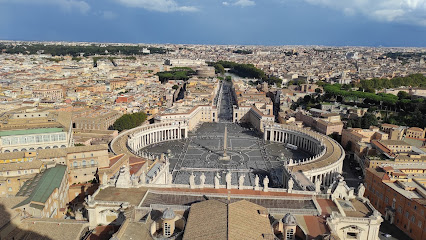
Sistine Chapel
Discover the breathtaking artistry and profound history of the Sistine Chapel, a cornerstone of Vatican City's cultural and religious heritage.
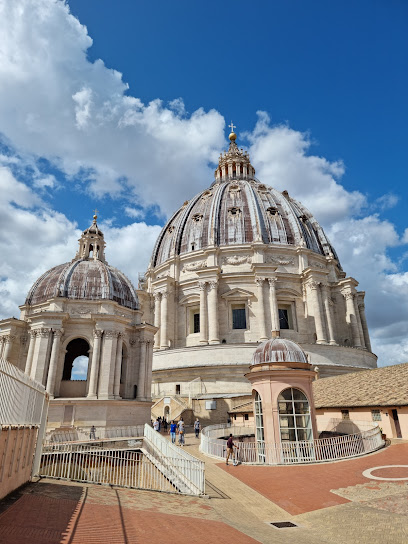
Saint Peter's Square
Explore Saint Peter's Square: a historic and spiritual hub in Vatican City, where art and faith meet in stunning architectural beauty.

St. Peter Square Obelisk
Explore the iconic St. Peter Square Obelisk in Vatican City, a historical landmark rich in culture and significance, surrounded by stunning architecture.
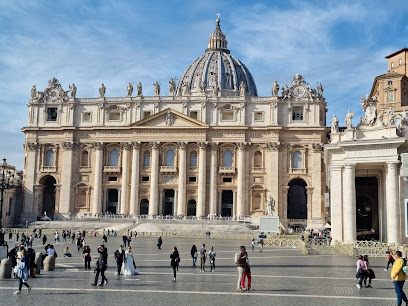
Gardens of Vatican City
Discover the breathtaking beauty and serene atmosphere of the Gardens of Vatican City, a tranquil retreat nestled in the heart of Rome's spiritual epicenter.
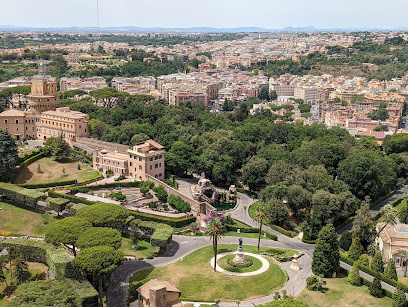
Apostolic Palace
Discover the majestic Apostolic Palace in Vatican City, a historical landmark rich in art and spiritual heritage, showcasing the power of the Catholic Church.

Vatican Necropolis
Explore the Vatican Necropolis, a historical marvel beneath St. Peter's Basilica, where ancient Roman history and early Christianity intertwine.
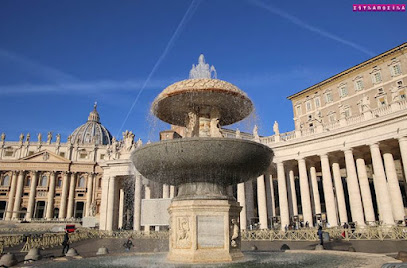
Excavation Office
Explore the hidden depths of Vatican City at the Excavation Office, where ancient history and religious significance intertwine beneath St. Peter's Basilica.
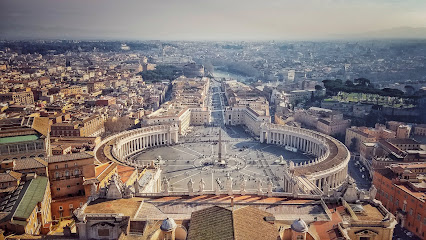
Gallery of Maps
Explore the breathtaking Gallery of Maps in Vatican City, a fusion of art and historical cartography showcasing Italy's rich geographical heritage.
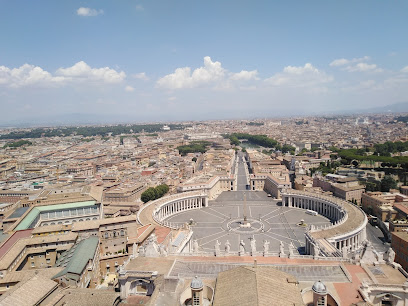
Tomb of Saint Peter
Discover the profound history and spiritual significance of the Tomb of Saint Peter, a must-visit pilgrimage site in Vatican City.

Scala Elicoidale Momo
Discover the architectural beauty of Scala Elicoidale Momo, a stunning spiral staircase that exemplifies the artistry and culture of Vatican City.
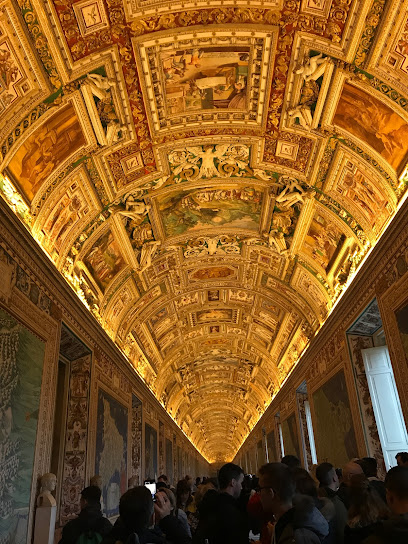
Chiesa di Santo Stefano degli Abissini
Discover the serene beauty and artistic heritage of Chiesa di Santo Stefano degli Abissini in Vatican City, a hidden gem for tourists seeking spiritual and cultural enrichment.
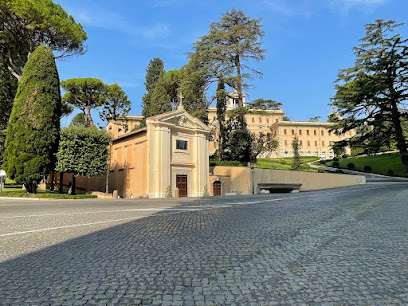
St. Peter's Baldachin
Explore the breathtaking St. Peter's Baldachin, a baroque masterpiece in Vatican City, symbolizing faith and artistic brilliance.
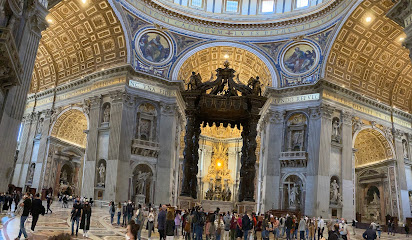
Cappella Niccolina
Discover the enchanting Cappella Niccolina in Vatican City, a hidden chapel adorned with Fra Angelico's masterpieces, steeped in Renaissance artistry.
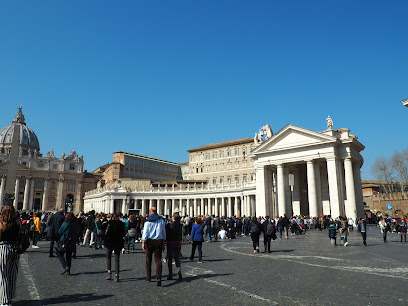
Radio Vaticana - Museo ed Uffici Amministrativi
Explore the rich history of Vatican City's Radio Vaticana, a unique museum showcasing the evolution of communication within the Catholic Church.
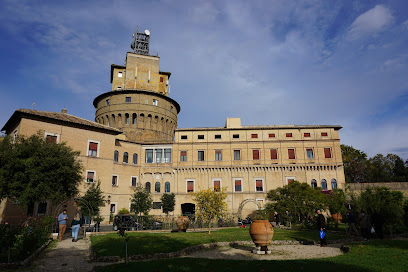
Unmissable attractions to see
Piazza Vittorio Emanuele II
Discover the vibrant atmosphere and rich history of Piazza Vittorio Emanuele II, a must-visit city park in the heart of Rome, Italy.
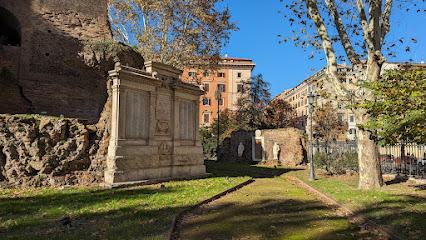
IKONO Roma
Explore the captivating fusion of art and technology at IKONO Roma, an immersive experience in the heart of the Eternal City.

Capannelle Racecourse
Discover the thrilling world of horse racing at Capannelle Racecourse, a vibrant sports complex in Rome offering excitement and entertainment year-round.

Porta Maggiore
Discover Porta Maggiore, a historic gateway in Rome showcasing ancient architecture and offering a glimpse into the city's rich cultural heritage.
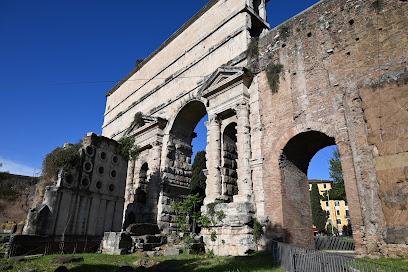
Villa Sciarra
Experience the serene beauty of Villa Sciarra, a historic park in Rome with stunning gardens, rich architecture, and cultural events for the perfect getaway.
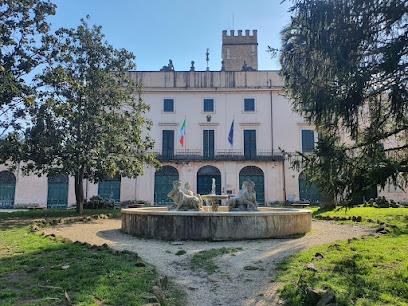
Museo Nazionale Romano, Palazzo Altemps
Explore the treasures of the Roman Empire at Museo Nazionale Romano, Palazzo Altemps - a captivating archaeological museum in the heart of Rome.
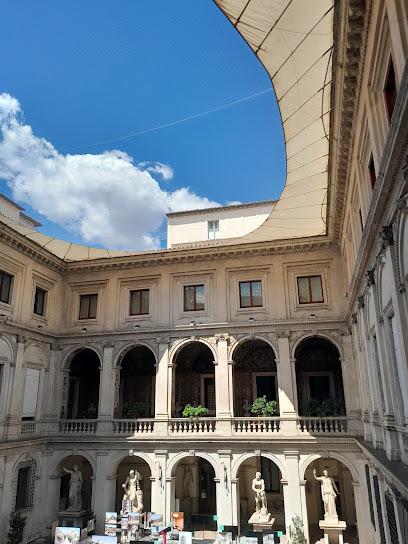
Basilica dei Santi Pietro e Paolo
Discover the architectural beauty and spiritual significance of Basilica dei Santi Pietro e Paolo, a must-visit Catholic church in Rome.
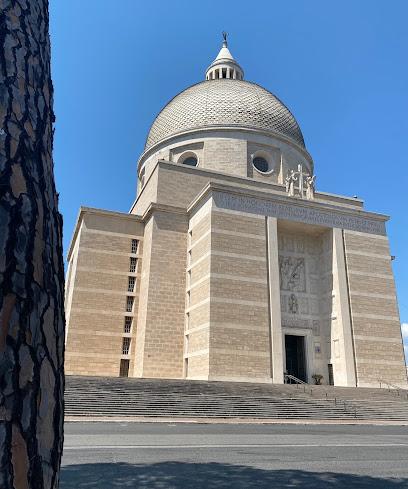
Catacombs of Priscilla
Explore the ancient Catacombs of Priscilla, a serene and historic site that reveals the rich tapestry of early Christian art and burial practices.
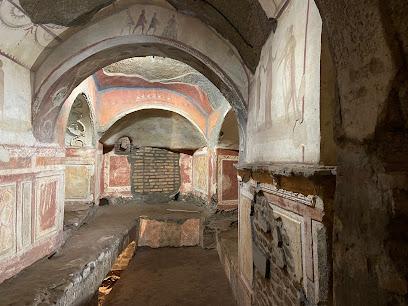
Mausoleo Delle Fosse Ardeatine
Explore the Mausoleo Delle Fosse Ardeatine, a profound historical site in Rome honoring the victims of World War II with a reflective and educational experience.

Casina delle civette
Explore the whimsical architecture and serene beauty of Casina delle Civette, an enchanting hidden gem in Rome's Villa Torlonia.
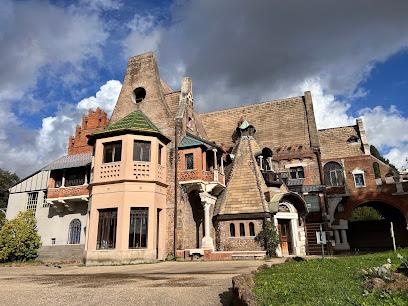
Giardini di Piazza Mazzini
Explore the enchanting Giardini di Piazza Mazzini, a serene oasis of greenery and fountains in the heart of Rome, perfect for relaxation and reflection.
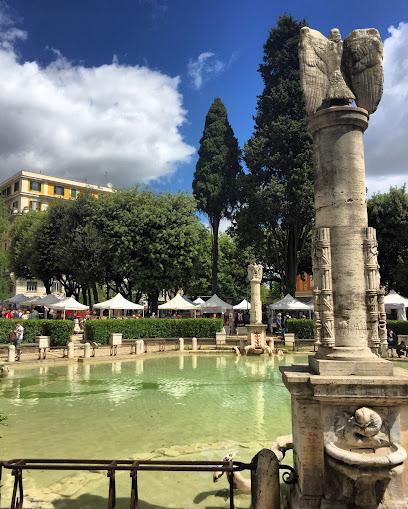
TopBike Rental & Tours
Experience the beauty of Rome on two wheels with TopBike Rental & Tours, offering bike rentals and guided tours through the city's historic streets.
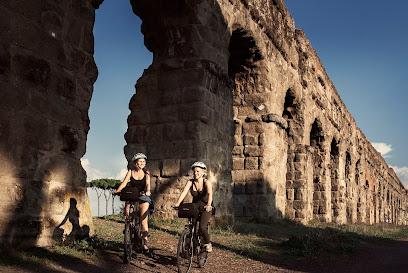
Faro di Roma
Explore the breathtaking views and historical significance of Faro di Roma, a must-see monument atop Gianicolo Hill in the heart of Rome.
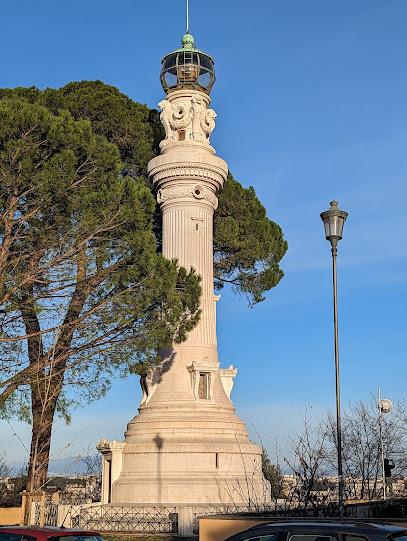
Museo Carlo Bilotti
Immerse yourself in contemporary art at Museo Carlo Bilotti, where Italian creativity meets tranquility in the heart of Rome's Villa Borghese.
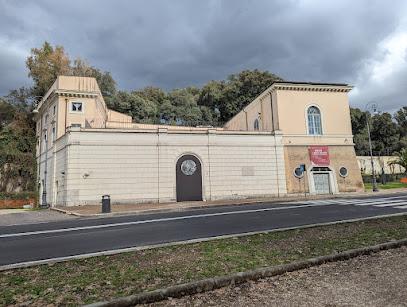
San Giorgio in Velabro
Explore the beauty and tranquility of San Giorgio in Velabro, a historic Catholic church in the heart of Rome, offering a serene escape and rich cultural heritage.
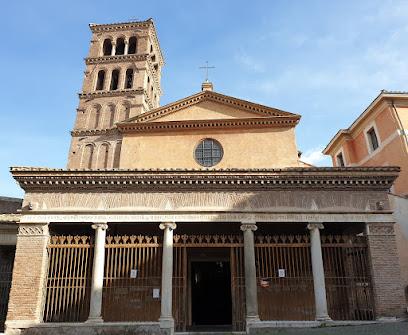
Essential places to dine
Pastasciutta
Experience authentic Italian cuisine at Pastasciutta in Rome, where fresh pasta meets affordability in a cozy atmosphere.
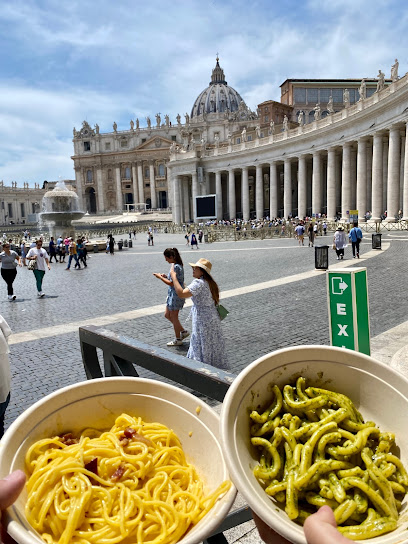
Ristorante dei Musei
Experience authentic Italian cuisine at Ristorante dei Musei near Vatican City, where delicious pizza meets warm hospitality.
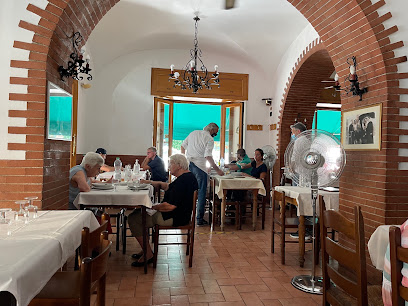
Caffè Delle Commari
Discover Caffè Delle Commari: A cozy restaurant near Vatican City serving exquisite Italian coffee and cocktails.
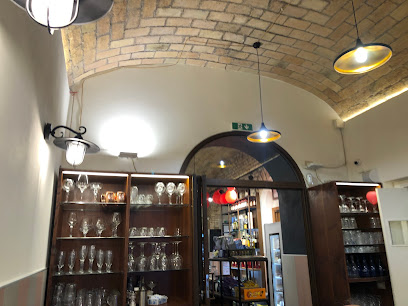
L'Isola della Pizza
Experience authentic Italian flavors at L'Isola della Pizza, renowned for its exquisite pizzas and Roman dishes near Vatican City.
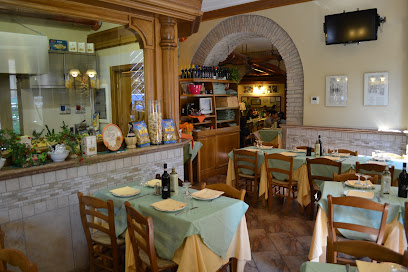
La Soffitta Renovatio
Experience authentic Italian cuisine at La Soffitta Renovatio near Vatican City - where every dish tells a story.
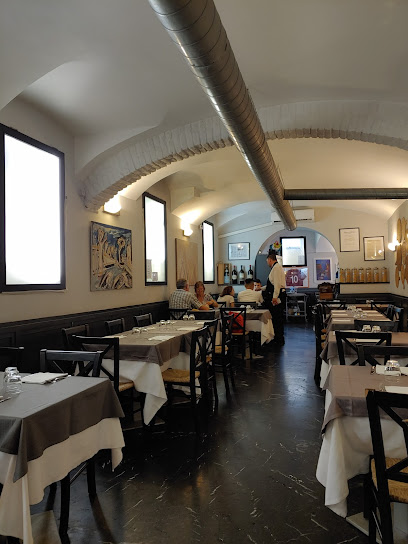
Borghiciana Pastificio Artigianale
Discover the authentic taste of Rome at Borghiciana Pastificio Artigianale, where artisanal pasta meets traditional flavors in a charming setting.
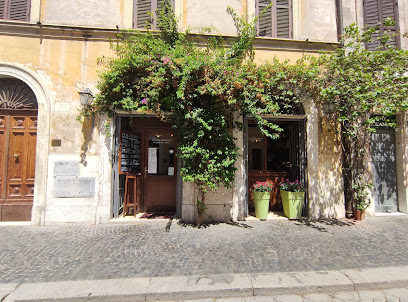
Papa Rex Ristorante - dal 1991 -
Experience authentic Italian cuisine at Papa Rex Ristorante in Rome - renowned for its delicious pizzas and traditional Roman dishes.
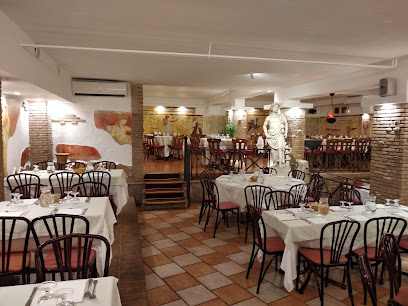
Ristorante Arlù
Experience authentic Italian cuisine at Ristorante Arlù near Vatican City—where every meal is a taste of tradition.
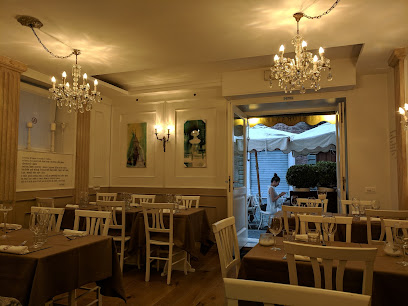
Mama Eat Lab
Discover Mama Eat Lab: An authentic Italian restaurant near Vatican City specializing in gluten-free dishes and delicious pizzas.
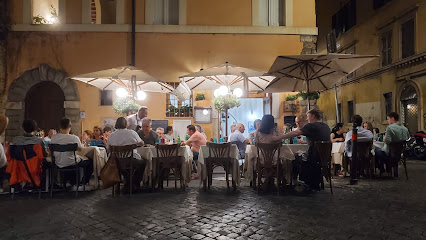
Forno Feliziani
Experience authentic Roman pizza at Forno Feliziani - where tradition meets taste in every delicious slice.
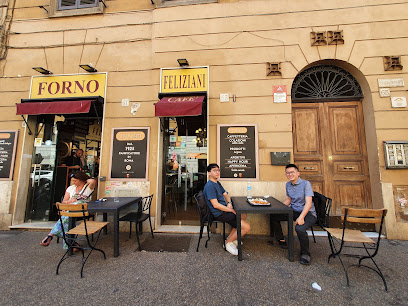
Il Colibrì
Experience authentic Italian flavors at Il Colibrì, where traditional cuisine meets warm hospitality in the heart of Rome.
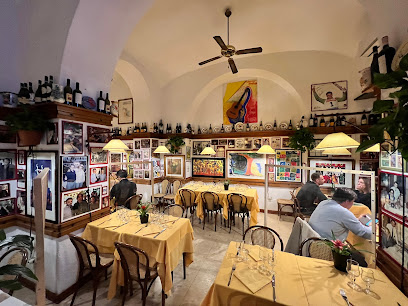
La Locanda di Pietro
Experience authentic Italian cuisine at La Locanda di Pietro near Vatican City, where tradition meets flavor in every bite.

Spaghetti
Experience authentic Italian flavors at Spaghetti near Vatican City – where every dish tells a story.
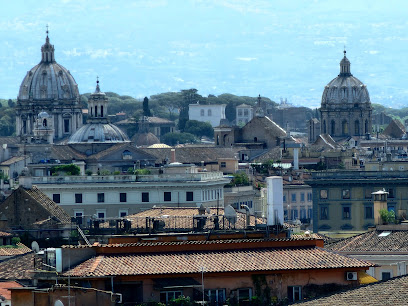
Scialla The Original Street Food
Experience authentic Roman street food at Scialla - where traditional flavors meet a vibrant atmosphere just steps from Vatican City.
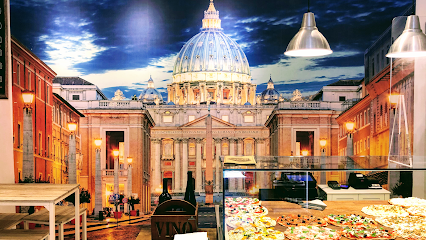
Trattoria Vaticano Giggi
Discover authentic Roman cuisine at Trattoria Vaticano Giggi, your culinary haven near the Vatican City in Rome.

Markets, malls and hidden boutiques
Annona Vatican City
Explore the local flavors of Italy at Annona Vatican City, your one-stop grocery store for fresh produce and gourmet delights.
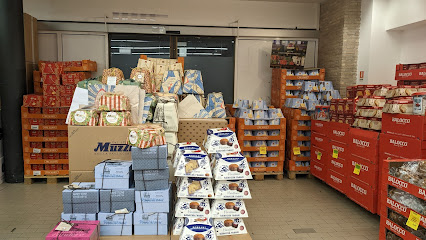
Savelli Religious (Savelli Art and Tradition)
Explore Savelli Religious in Rome for unique spiritual gifts, exquisite jewelry, and a touch of Italy's rich religious heritage.

St. Peter's Gallery
Explore St. Peter's Gallery for unique souvenirs and authentic Italian coffee, right in the heart of Vatican City.
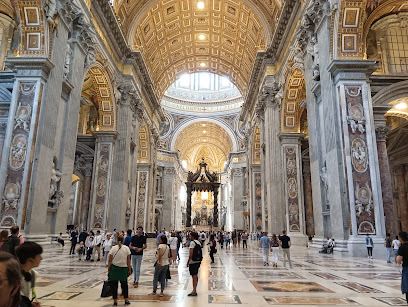
Mondo Cattolico
Explore Mondo Cattolico in Vatican City for a unique selection of religious goods and souvenirs that capture the spirit of your pilgrimage.
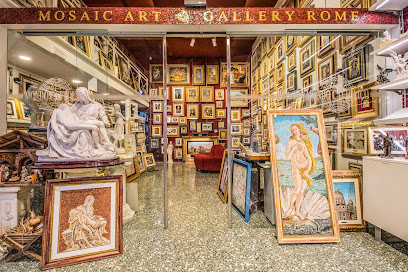
Vatican Emporium - Religious Articles & Gifts
Explore the Vatican Emporium for an array of exquisite religious articles and gifts in the heart of Rome, perfect for every visitor's spiritual journey.
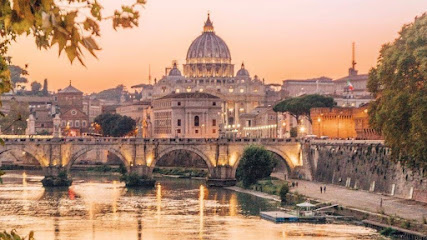
Domus Artis
Discover stunning religious art, unique jewelry, and authentic Roman souvenirs at Domus Artis, a cultural gem in the heart of Rome.
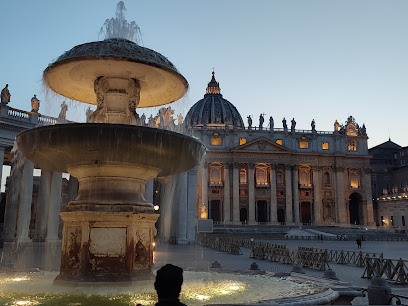
Tourist Information Office
Discover essential travel insights and unique souvenirs at the Tourist Information Office in Vatican City, the gateway to an unforgettable experience.
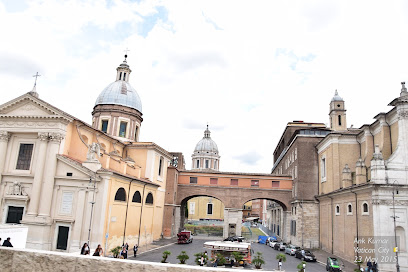
Russia Ecumenical Center
Explore the Russia Ecumenical Center in Rome, a unique religious goods store that bridges culture, faith, and art in a tranquil setting.
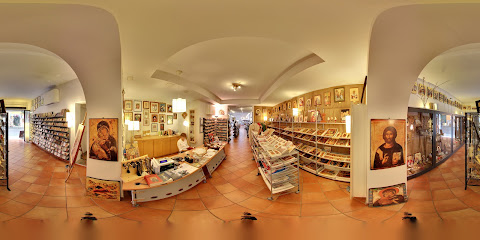
Emporio Vaticano
Discover a unique collection of religious artifacts and souvenirs at Emporio Vaticano, your gateway to sacred treasures in the heart of Rome.
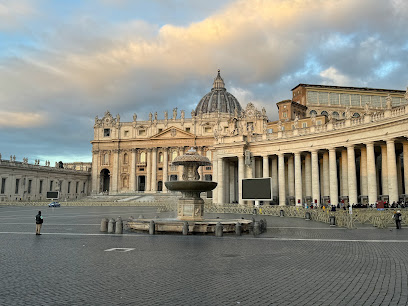
Vatican Souvenir & Mini Market
Discover unique souvenirs and everyday essentials at the Vatican Souvenir & Mini Market, your gateway to local Roman culture.
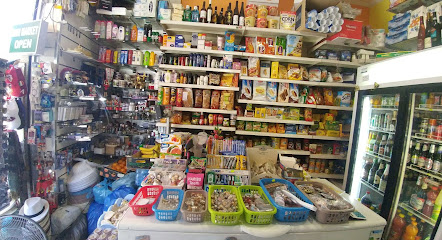
Angela Souvenirs roma
Explore Angela Souvenirs in Rome for unique gifts and clothing that capture the essence of Italian culture.
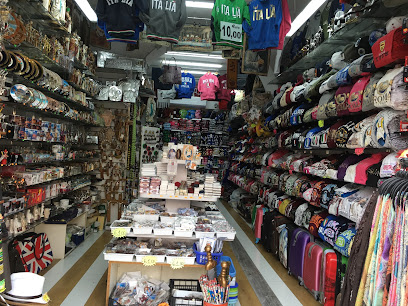
Souvenir shop
Explore a delightful souvenir shop in Rome, featuring unique clothing and accessories that capture the essence of the Eternal City.
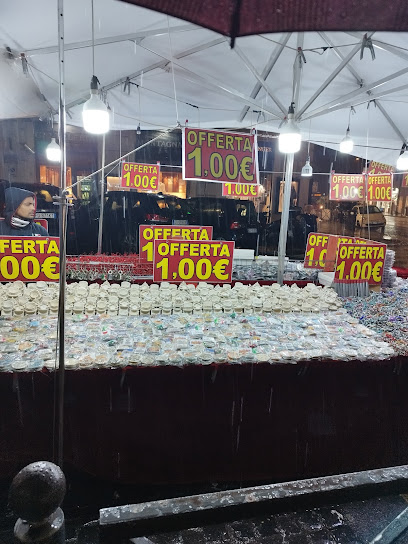
Vatican Souvenir (S.R.L.)
Explore Vatican Souvenir for unique religious gifts and memorable keepsakes reflecting the Vatican's rich spiritual heritage.
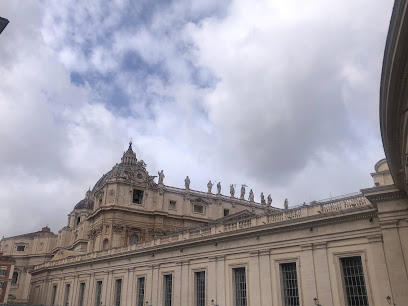
Souvenir Vaticano
Explore the charm of Souvenir Vaticano, where authentic Roman souvenirs reflect the rich history and culture of the Vatican.
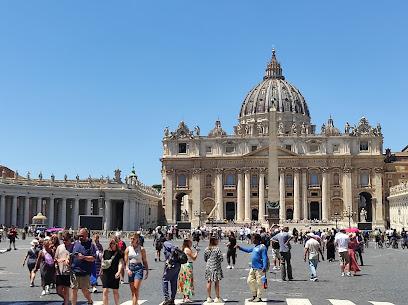
R-Store Città del Vaticano - Rivenditore Autorizzato Apple
Shop the latest Apple products at R-Store Città del Vaticano, a unique electronics store in the heart of Vatican City, blending technology with history.

Essential bars & hidden hideouts
La Zanzara
Experience authentic Italian cuisine and innovative cocktails at La Zanzara, a vibrant bistro near Vatican City in the heart of Rome.
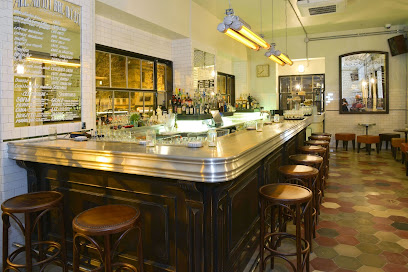
Il Sorpasso
Experience authentic Italian cuisine at Il Sorpasso, a charming restaurant and wine bar in Rome, perfect for food lovers and wine enthusiasts.
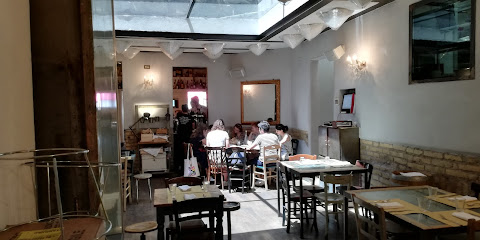
Ristorante Arlù
Experience the essence of Italian dining near Vatican City at Ristorante Arlù, where tradition meets flavor in every dish.
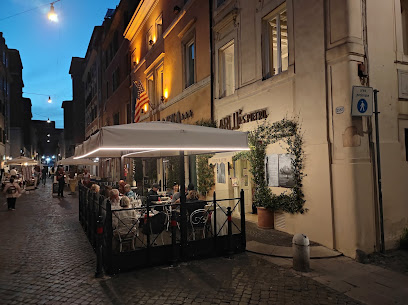
Forno Feliziani
Discover Rome's authentic pizza experience at Forno Feliziani, where every slice brings the taste of Italy to your plate.
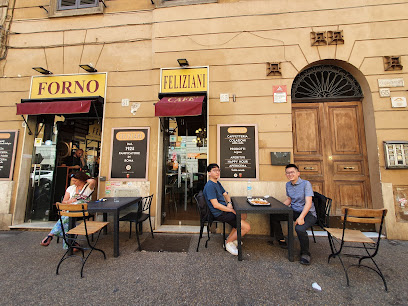
La Locanda di Pietro
Experience authentic Italian cuisine at La Locanda di Pietro, a charming restaurant near the Vatican, perfect for takeout or a cozy meal.
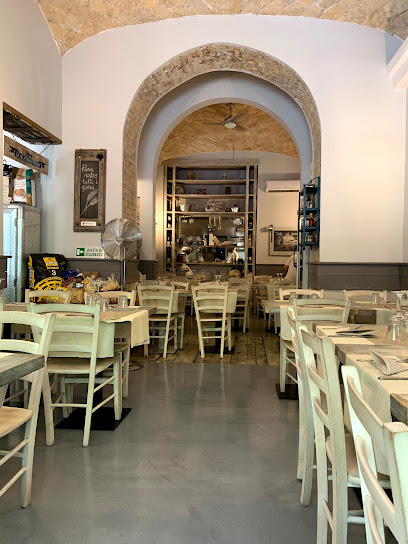
Wine Bar De' Penitenzieri
Experience the best of Italian wines and cuisine at Wine Bar De' Penitenzieri, a cozy retreat near Vatican City.
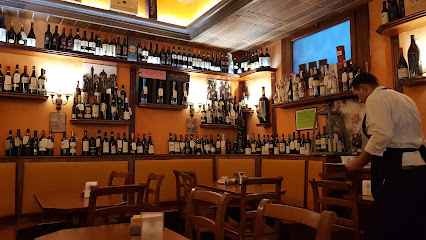
Osteria delle Commari
Savor the authentic flavors of Italy at Osteria delle Commari, a charming restaurant near Vatican City offering exquisite Mediterranean cuisine.
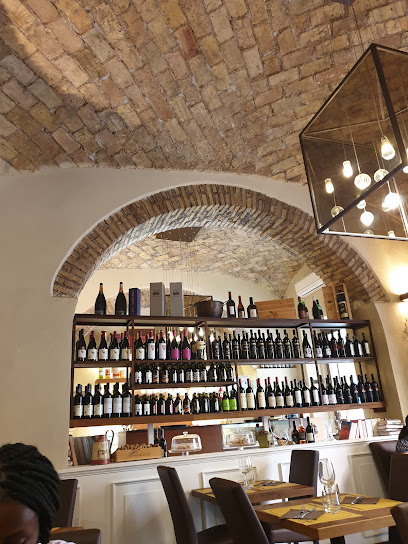
Caffè Vaticano
Discover Caffè Vaticano, an espresso bar next to Vatican City, offering authentic Italian coffee and delightful pastries for an unforgettable experience.
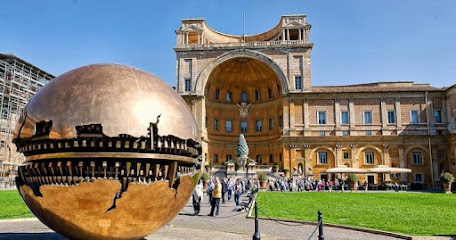
The Loft
Discover The Loft, a delightful bistro in Rome that offers a unique blend of traditional Italian dishes and modern culinary creativity, just steps from Vatican City.
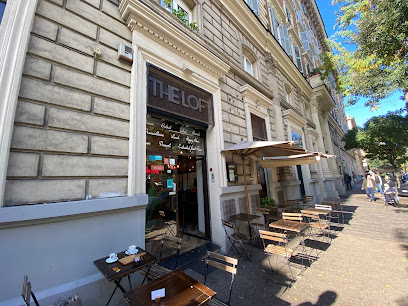
Hostaria San Pietro
Experience authentic Italian cuisine at Hostaria San Pietro, just minutes from the Vatican, offering a delightful menu and an inviting atmosphere.
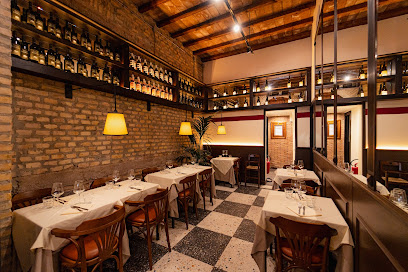
Bar Novecentotredici
Discover the essence of Italian coffee culture at Bar Novecentotredici, where exquisite pastries and refreshing drinks await near the Vatican.
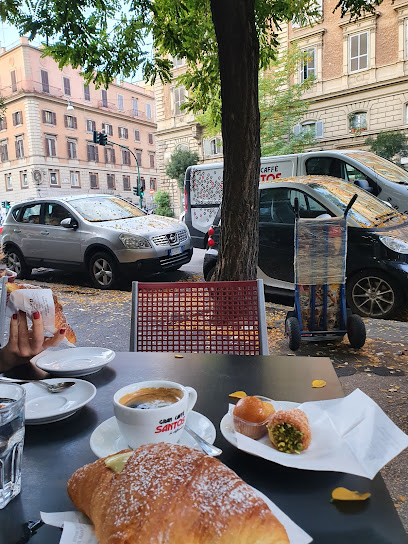
Angrypig Birretta e Porchetta
Savor authentic Italian sandwiches and craft beers at Angrypig Birretta e Porchetta, the perfect culinary stop near the Vatican.

Piacere Molise
Experience the authentic flavors of Italy at Piacere Molise, where every bite is a taste of tradition in the heart of Rome.
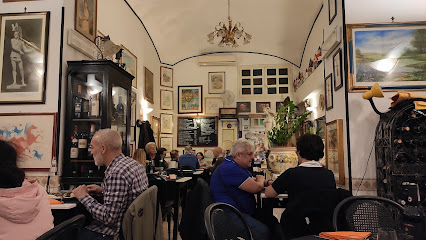
Il Segreto - Italian restaurant near the Vatican
Experience authentic Italian cuisine at Il Segreto, a charming restaurant near the Vatican, perfect for travelers seeking delicious flavors.

Roof Garden & Bar
Discover breathtaking views and exquisite drinks at the Roof Garden & Bar, a serene escape in the heart of Rome's vibrant skyline.
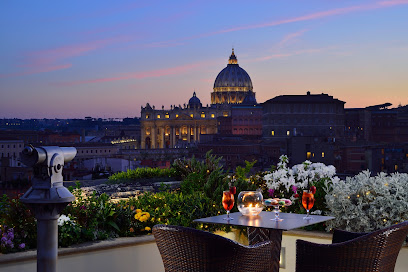
Local Phrases about Vatican Radio
-
- HelloCiao
[chow] - GoodbyeArrivederci
[ah-ree-veh-dehr-chee] - YesSì
[see] - NoNo
[noh] - Please/You're welcomePer favore
[pehr fah-vo-reh] - Thank youGrazie
[grah-tsyeh] - Excuse me/SorryMi scusi
[mee skoo-zee] - How are you?Come stai?
[koh-meh stah-ee] - Fine. And you?Bene. E tu?
[beh-neh. eh too] - Do you speak English?Parli inglese?
[pahr-lee een-gleh-zeh] - I don't understandNon capisco
[nohn kah-pee-sko]
- HelloCiao
-
- I'd like to see the menu, pleaseVorrei vedere il menu, per favore
[voh-reh-ee veh-deh-reh eel meh-noo pehr fah-vo-reh] - I don't eat meatNon mangio carne
[nohn mahn-joh kahr-neh] - Cheers!Salute!
[sah-loo-teh] - I would like to pay, pleaseVorrei pagare, per favore
[voh-reh-ee pah-gah-reh pehr fah-vo-reh]
- I'd like to see the menu, pleaseVorrei vedere il menu, per favore
-
- Help!Aiuto!
[ah-yoo-toh] - Go away!Vai via!
[vah-ee vee-ah] - Call the Police!Chiami la polizia!
[kyah-mee lah poh-lee-tsya] - Call a doctor!Chiami un medico!
[kyah-mee oon meh-dee-koh] - I'm lostMi sono perso
[mee soh-no pehr-soh] - I'm illSono malato
[soh-noh mah-lah-toh]
- Help!Aiuto!
-
- I'd like to buy...Vorrei comprare...
[voh-reh-ee kohm-prah-reh] - I'm just lookingSto solo guardando
[stoh soh-loh gwar-dahn-doh] - How much is it?Quanto costa?
[kwan-toh koh-stah] - That's too expensiveÈ troppo caro
[eh troh-poh kah-roh] - Can you lower the price?Può abbassare il prezzo?
[pwah ab-bah-sah-reh eel preh-tsoh]
- I'd like to buy...Vorrei comprare...
-
- What time is it?Che ora è?
[keh oh-rah eh] - It's one o'clockÈ l'una
[eh loo-nah] - Half past (10)Sono le dieci e mezza
[soh-noh leh dee-eh-chee eh meh-tzah] - MorningMattina
[maht-tee-nah] - AfternoonPomeriggio
[poh-meh-ree-joh] - EveningSera
[seh-rah] - YesterdayIeri
[yeh-ree] - TodayOggi
[oh-jee] - TomorrowDomani
[doh-mah-nee] - 1Uno
[oo-noh] - 2Due
[doo-eh] - 3Tre
[treh] - 4Quattro
[kwah-troh] - 5Cinque
[cheen-kweh] - 6Sei
[seh-ee] - 7Sette
[seht-teh] - 8Otto
[oh-toh] - 9Nove
[noh-veh] - 10Dieci
[dee-eh-chee]
- What time is it?Che ora è?
-
- Where's a/the...?Dove si trova...?
[doh-veh see troh-vah] - What's the address?Qual è l'indirizzo?
[kwahl eh leen-dee-ree-tsoh] - Can you show me (on the map)?Può mostrarmi (sulla mappa)?
[pwah mohs-trahr-mee soo-lah mahp-pah] - When's the next (bus)?Quando passa il prossimo (autobus)?
[kwan-doh pahs-sah eel prohs-shee-moh ow-toh-boos] - A ticket (to ....)Un biglietto (per ....)
[oon beel-lyeh-toh pehr]
- Where's a/the...?Dove si trova...?
History of Vatican Radio
-
Vatican Radio was established by Pope Pius XI in 1931. The station was inaugurated on February 12, 1931, and was a significant step in the Vatican's efforts to communicate with the global Catholic community and beyond. The renowned inventor Guglielmo Marconi, a pioneer in wireless communication, played a critical role in its creation.
-
Guglielmo Marconi, an Italian electrical engineer and Nobel Laureate, was instrumental in the founding of Vatican Radio. He supervised the installation of the first radio transmitter within the Vatican Gardens. Marconi's work ensured that the station could broadcast messages from the Pope directly to the faithful around the world.
-
During World War II, Vatican Radio played a crucial role in providing news and messages of hope to people living under oppressive regimes. The station broadcast in multiple languages, offering spiritual solace and reporting on wartime atrocities. It became a beacon of truth and hope during a time of great global turmoil.
-
The Second Vatican Council (1962-1965) marked a period of significant change and modernization within the Catholic Church. Vatican Radio was at the forefront of communicating the Council's decisions and discussions. The station provided extensive coverage, ensuring that Catholics worldwide were informed about the reforms and their implications.
-
Over the decades, Vatican Radio has continuously adapted to technological advancements. From shortwave and medium wave broadcasts, the station has expanded to FM, satellite, and internet streaming. This evolution has enabled Vatican Radio to reach broader audiences and remain relevant in the digital age.
-
Today, Vatican Radio operates as a major component of the Dicastery for Communication within the Holy See. It continues to broadcast in multiple languages and covers a wide range of topics, from religious programming to global news and cultural content. The station remains a vital tool for the Vatican to communicate with the world.
Vatican Radio Essentials
-
Vatican City is located within Rome, Italy. The nearest international airport is Leonardo da Vinci–Fiumicino Airport (FCO), approximately 30 kilometers away. From the airport, you can take a train to Roma Termini, the main railway station in Rome, and then switch to a bus or a metro line to reach Vatican City. Alternatively, taxis and shuttle services are available for direct transportation to Vatican City.
-
Once in Rome, reaching Vatican City is straightforward. The Metro Line A (orange line) stops at Ottaviano-S. Pietro, which is a short walk from the Vatican. Buses 40 and 64 also have stops near the Vatican. For those who prefer walking, many attractions in Rome are within a reasonable distance from Vatican City. Taxis and ride-sharing services like Uber are also readily available.
-
The official currency in Vatican City, like the rest of Italy, is the Euro (EUR). Credit and debit cards are widely accepted, but it is advisable to carry some cash for small purchases or in case you visit places that do not accept cards. ATMs are available in the vicinity of Vatican City, including inside the Vatican Museums.
-
Vatican City and its surrounding areas in Rome are generally safe for tourists. However, pickpocketing can occur, especially in crowded areas like St. Peter’s Square and near the Vatican Museums. It is advisable to stay vigilant, keep your belongings secure, and avoid displaying valuables. There are no high-crime areas specifically targeting tourists, but standard precautions should always be taken.
-
In case of an emergency, dial 112, the general emergency number in Europe, which connects you to police, medical services, or fire departments. Within Vatican City, there is a small medical center available for emergencies. It is recommended to have travel insurance that covers medical emergencies. Pharmacies are available nearby in Rome for minor health issues.
-
Fashion: Do dress modestly, especially when visiting religious sites. Shoulders and knees should be covered. Avoid wearing revealing clothing. Religion: Do respect the religious significance of Vatican City. Silence your phone and avoid loud conversations in sacred areas. Public Transport: Do purchase tickets before boarding and validate them to avoid fines. Don’t eat or drink on public transportation. Greetings: Do greet people with a polite 'Buongiorno' (Good morning) or 'Buonasera' (Good evening). A handshake is a common form of greeting. Eating & Drinking: Do try local Italian cuisine and accept food offerings graciously. Don’t refuse hospitality, as it is considered impolite.
-
To experience Vatican City like a local, consider visiting early in the morning to avoid the crowds. Explore the Vatican Gardens if you have extra time, as they offer a peaceful retreat from the busy tourist areas. Engage with the Swiss Guards and Vatican staff respectfully; they are often willing to share interesting insights about the Vatican. Also, take the time to explore the surrounding neighborhoods of Prati and Borgo for authentic Roman dining experiences.
Trending Landmarks in Vatican Radio
-
Vatican Museums
-
Sistine Chapel
-
Saint Peter's Square
-
St. Peter Square Obelisk
-
Gardens of Vatican City
-
Apostolic Palace
-
Vatican Necropolis
-
Excavation Office
-
Gallery of Maps
-
Tomb of Saint Peter
-
Scala Elicoidale Momo
-
Chiesa di Santo Stefano degli Abissini
-
St. Peter's Baldachin
-
Cappella Niccolina
-
Radio Vaticana - Museo ed Uffici Amministrativi
Nearby Cities to Vatican Radio
-
Things To Do in Vatican Pinacoteca
-
Things To Do in St. Peter's Basilica
-
Things To Do in Sistine Chapel
-
Things To Do in Vatican Necropolis
-
Things To Do in Vatican Museums
-
Things To Do in Gregorian Etruscan Museum
-
Things To Do in Apostolic Palace
-
Things To Do in St. Peter's Square
-
Things To Do in Rome
-
Things To Do in Orvieto
-
Things To Do in Assisi
-
Things To Do in Perugia
-
Things To Do in Montepulciano
-
Things To Do in Arezzo
-
Things To Do in Siena








